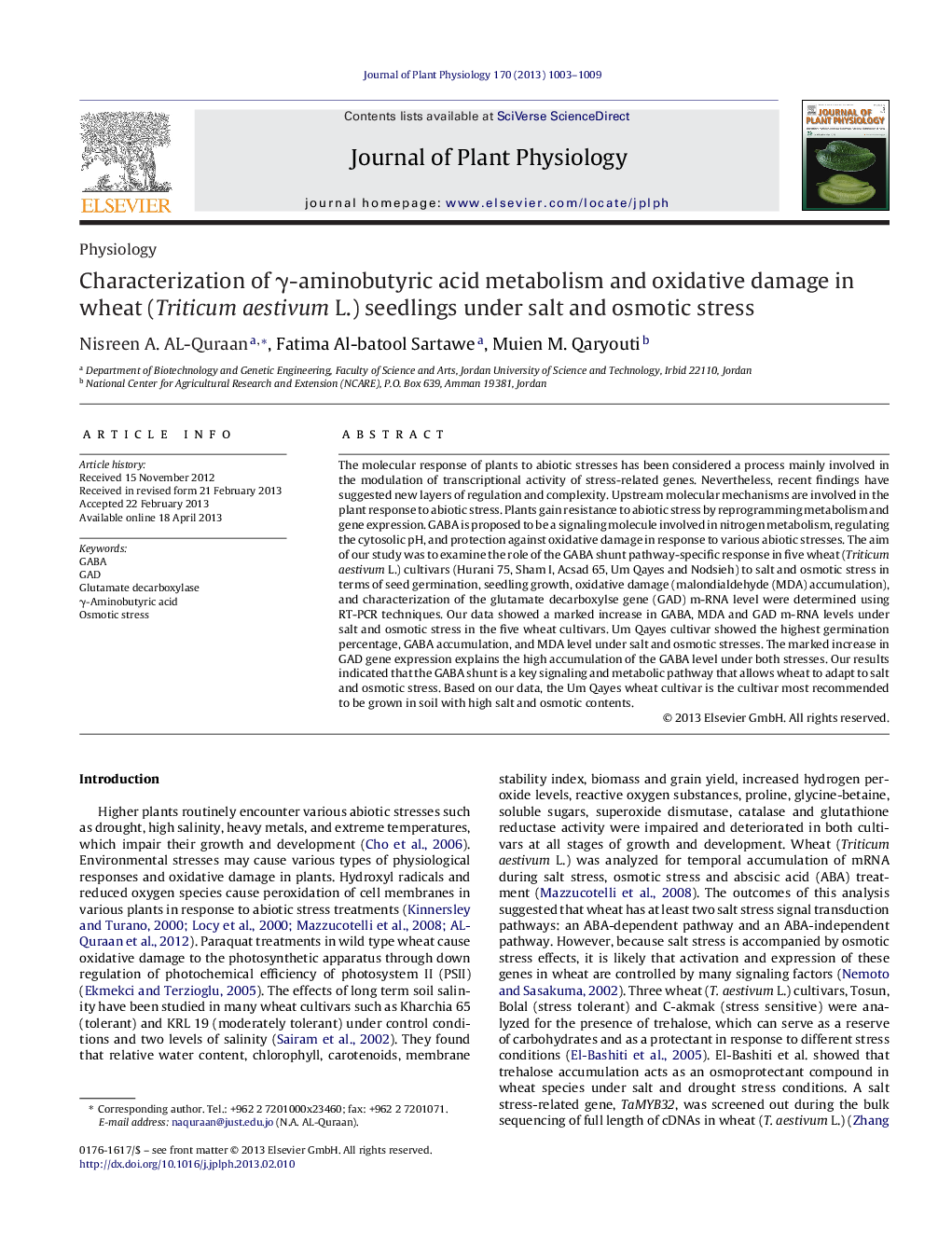| کد مقاله | کد نشریه | سال انتشار | مقاله انگلیسی | نسخه تمام متن |
|---|---|---|---|---|
| 2056018 | 1075796 | 2013 | 7 صفحه PDF | دانلود رایگان |

The molecular response of plants to abiotic stresses has been considered a process mainly involved in the modulation of transcriptional activity of stress-related genes. Nevertheless, recent findings have suggested new layers of regulation and complexity. Upstream molecular mechanisms are involved in the plant response to abiotic stress. Plants gain resistance to abiotic stress by reprogramming metabolism and gene expression. GABA is proposed to be a signaling molecule involved in nitrogen metabolism, regulating the cytosolic pH, and protection against oxidative damage in response to various abiotic stresses. The aim of our study was to examine the role of the GABA shunt pathway-specific response in five wheat (Triticum aestivum L.) cultivars (Hurani 75, Sham I, Acsad 65, Um Qayes and Nodsieh) to salt and osmotic stress in terms of seed germination, seedling growth, oxidative damage (malondialdehyde (MDA) accumulation), and characterization of the glutamate decarboxylse gene (GAD) m-RNA level were determined using RT-PCR techniques. Our data showed a marked increase in GABA, MDA and GAD m-RNA levels under salt and osmotic stress in the five wheat cultivars. Um Qayes cultivar showed the highest germination percentage, GABA accumulation, and MDA level under salt and osmotic stresses. The marked increase in GAD gene expression explains the high accumulation of the GABA level under both stresses. Our results indicated that the GABA shunt is a key signaling and metabolic pathway that allows wheat to adapt to salt and osmotic stress. Based on our data, the Um Qayes wheat cultivar is the cultivar most recommended to be grown in soil with high salt and osmotic contents.
Journal: Journal of Plant Physiology - Volume 170, Issue 11, 15 July 2013, Pages 1003–1009